Dinosaurs: Their Lives, Their Deaths and Their Evolution!
by Dr. Bob Gardner
Department of Mathematics
Department of Physics and Astronomy
Institute of Mathematical and Physical Sciences
East Tennessee State University
Our Concept of Dinosaurs Before 1960
In the early and mid 1800's, there were very few dinosaur fossils. Of the
known fossils, there were no complete skeletons of any specimen. The
paleontologists of the day did the best they could with the fragmentary
evidence they had. Some of the first guesses as to what dinosaurs looked
like seem almost funny as compared to our ideas today.
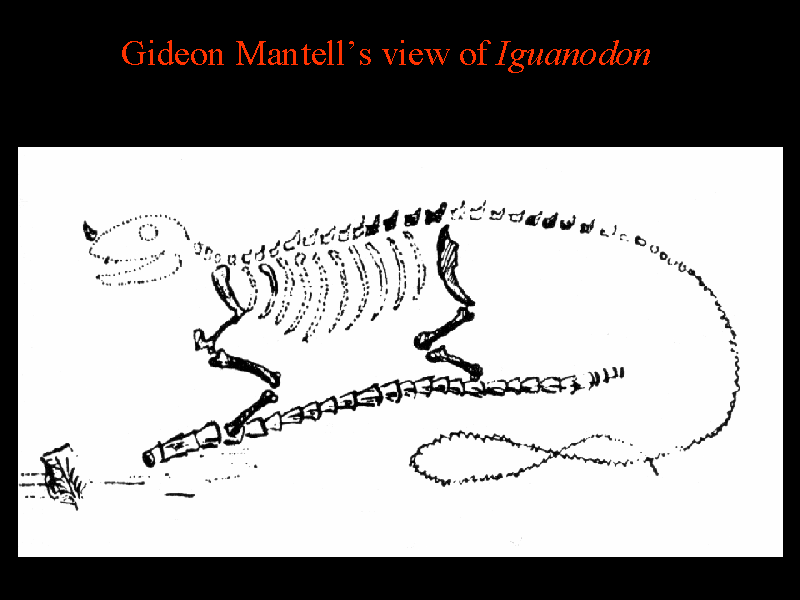 Consider Gideon Mantell's construction of an Iguanodon. He tried to mimic
the appearance of living reptiles in his reconstruction. Notice the
"horn"
on the nose. It was latter discovered that this horn is not a horn at all,
but actually the thumb bone of Iguanodon.
Consider Gideon Mantell's construction of an Iguanodon. He tried to mimic
the appearance of living reptiles in his reconstruction. Notice the
"horn"
on the nose. It was latter discovered that this horn is not a horn at all,
but actually the thumb bone of Iguanodon.
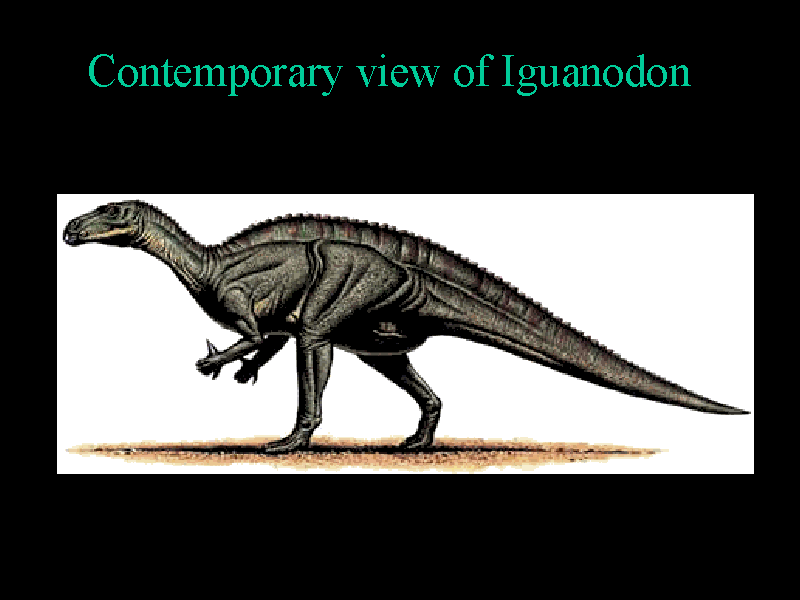
Based on a jaw bone, some hip and rib bones, and a toe bone, Richard Owen
guessed that Megalosaurus looked like this:
 Today, with much better fossilized specimens to guide us, we think that
Megalosaurus looked like this:
Today, with much better fossilized specimens to guide us, we think that
Megalosaurus looked like this:
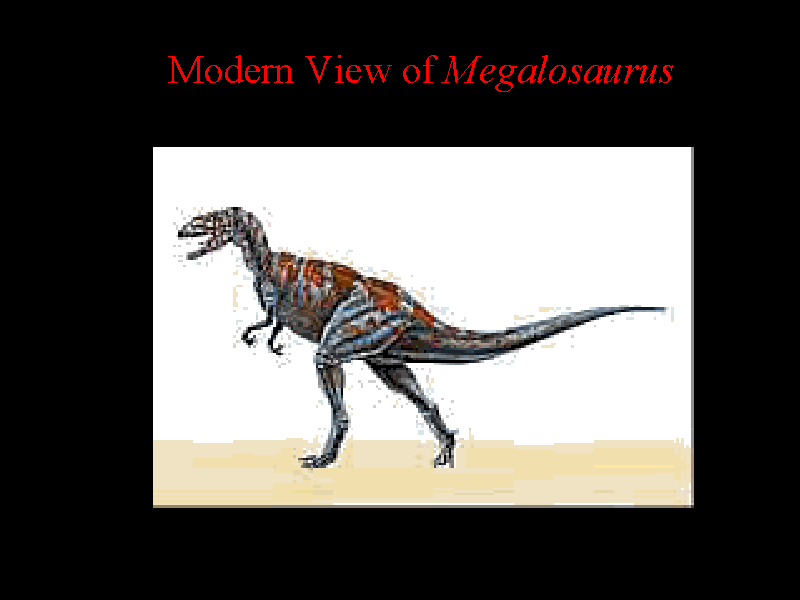 By 1870,
many of Owen's ideas had taken hold and the Mesozoic world was viewed as
occupied by giant lumbering lizards which look similar to oversized versions
of modern reptiles.
By 1870,
many of Owen's ideas had taken hold and the Mesozoic world was viewed as
occupied by giant lumbering lizards which look similar to oversized versions
of modern reptiles.
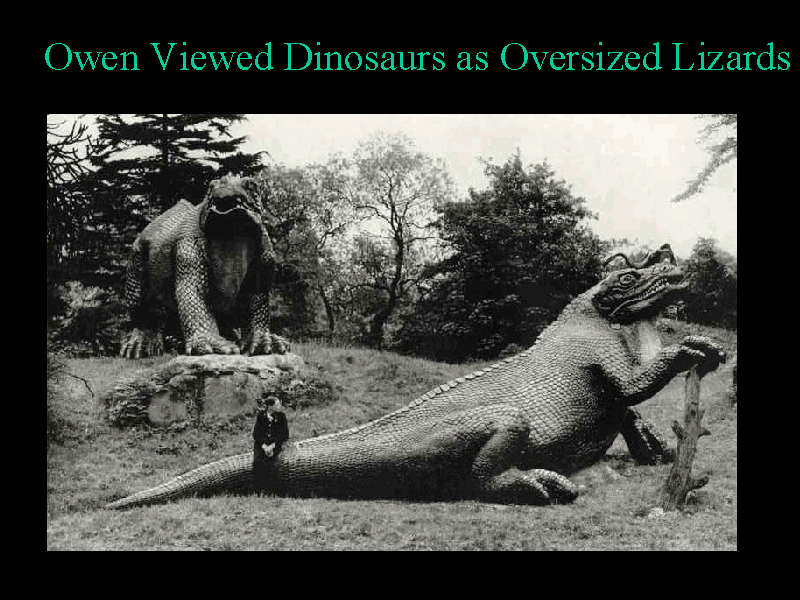
By the late 1800's, the number and completeness of dinosaur specimens had
begun to grow dramatically (this being due in great part to Cope and Marsh).
Dinosaurs were thought to look different from living reptiles (primarily due
to their sizes), but were still thought to be cold-blooded, clumsy, and
sluggish. In Marsh's own words describing
Brontosaurus:
 Some dinosaurs were thought to be so big and heavy that they could barely
stand up on dry land. They were thought to live in lakes where the buoyancy
of the water helped support their massive bodies.
Some dinosaurs were thought to be so big and heavy that they could barely
stand up on dry land. They were thought to live in lakes where the buoyancy
of the water helped support their massive bodies.
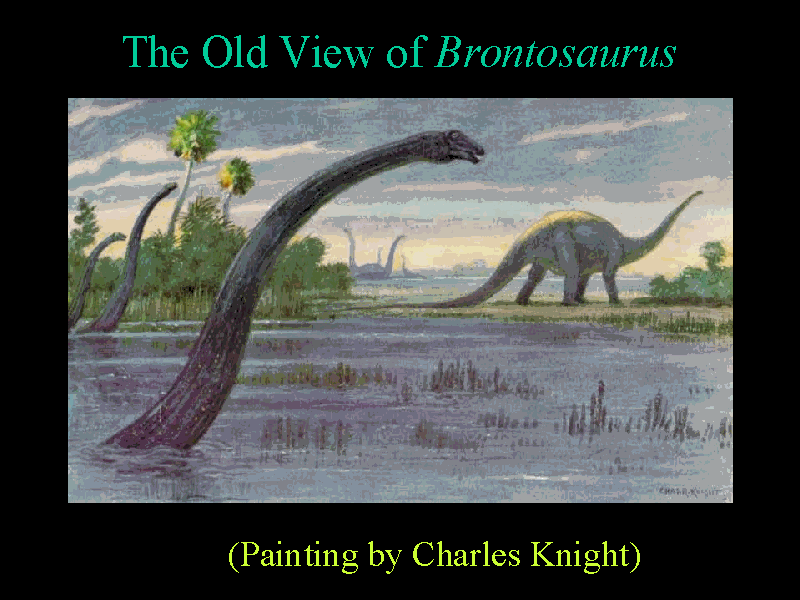 By the 1930's and `40's this was our classical view of dinosaurs: they were
slow, dim-witted, and cold-blooded.
By the 1930's and `40's this was our classical view of dinosaurs: they were
slow, dim-witted, and cold-blooded.
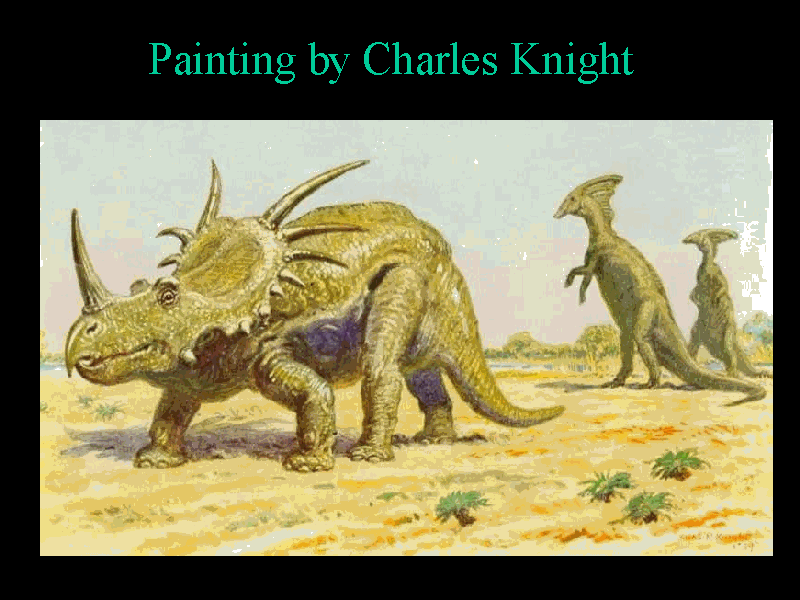 It was also
thought that many of the bipedal dinosaurs (those that walked on two legs),
dragged their tails, and, like people, stood upright. These ideas are
reflected in several famous paintings by Charles Knight.
It was also
thought that many of the bipedal dinosaurs (those that walked on two legs),
dragged their tails, and, like people, stood upright. These ideas are
reflected in several famous paintings by Charles Knight.
However, not every dinosaur was a lumbering giant.
 Even at this time, there were known to be small bird-like dinosaur specimens
such as Compsognathus and Struthiomimus. As late as the 1860's,
the ideas of Owen and Cope that dinosaurs were active and dynamic animals was
popular among many paleontologists. However, Marsh's idea of slow and
dull-witted dinosaurs soon took hold and it was almost 100 years before our
modern concept of dinosaurs as active, running, jumping and hunting creatures
was developed.
Even at this time, there were known to be small bird-like dinosaur specimens
such as Compsognathus and Struthiomimus. As late as the 1860's,
the ideas of Owen and Cope that dinosaurs were active and dynamic animals was
popular among many paleontologists. However, Marsh's idea of slow and
dull-witted dinosaurs soon took hold and it was almost 100 years before our
modern concept of dinosaurs as active, running, jumping and hunting creatures
was developed.
Go to the next section.









